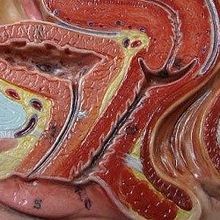vaginal microbiome

Infographic: How Immunology Can Influence Pregnancy Outcomes
Tobias R. Kollmann, Arnaud Marchant, and Sing Sing Way | Nov 14, 2022 | 3 min read
Pregnancy-induced changes in the immune system are key to a successful birth. Understanding those changes could allow researchers to protect both mother and child.

Modulating Immunity to Improve Pregnancy Outcomes
Tobias R. Kollmann, Arnaud Marchant, and Sing Sing Way | Nov 14, 2022 | 10+ min read
Aberrant immune activation, the main cause of prematurity and stillbirths, could be preventable through interventions such as maternal vaccination.

Maternal Vaginal Fluids Mimic Microbe Transfer of Vaginal Birth
Alejandra Manjarrez, PhD | Jun 23, 2021 | 4 min read
Swabbing infants born by Cesarean-section with a gauze harboring their mother’s vaginal fluids made their skin and gut microbiota more closely resemble that of vaginally born babies.

Placental Microbiome’s Existence Challenged
Abby Olena, PhD | Jul 31, 2019 | 4 min read
The authors of a new study find no evidence for bacteria in the placenta, but others in the field question their interpretation of the data.

FBI Investigates uBiome for Financial Misconduct
Chia-Yi Hou | Apr 29, 2019 | 1 min read
Federal agents searched the offices of the personal microbiome testing company in San Francisco on April 26 following allegations of improperly billing health insurers.

How Do Infant Immune Systems Learn to Tolerate Gut Bacteria?
Diana Kwon | Jan 10, 2018 | 6 min read
Scientists are beginning to unravel the ways in which we develop a healthy relationship with the bugs in our bodies.

Bacteria Found in Women’s Upper Reproductive Tracts
Diana Kwon | Oct 17, 2017 | 3 min read
A new study identifies microorganisms residing in the human fallopian tubes and uterus, but some researchers are skeptical of the findings.

In-Depth Look at the Human Microbiome
Jef Akst | Sep 20, 2017 | 2 min read
Hundreds of samples from microbes living in the gut, skin, mouth, and vagina add to the human microbiome “fingerprint.”

Doctors Warn Against Vaginal Seeding
Jef Akst | Aug 24, 2017 | 1 min read
A group of Danish obstetricians notes that the procedure carries risks and that there is little evidence supporting its benefits to the infant microbiome.

Study: Babies’ Microbiomes Indifferent to Mode of Delivery
Kerry Grens | Jan 23, 2017 | 2 min read
Study of 81 six-week-olds who were born by C-section or vaginal delivery didn’t show differences in the structure or function of their microbiota, despite contrary results from other studies on babies.

Infant Microbiome: Vaginal Delivery Versus C-Section
Jef Akst | Nov 27, 2016 | 2 min read
A new literature review finds that even if babies born via Cesarean section have long-term health risks, as a number of past studies purport, it may not be a result of the procedure itself.

Startup Licenses “Vaginal Seeding” Approach
Tracy Vence | Mar 31, 2016 | 2 min read
Boston-based Commense plans to develop microbial and nonmicrobial interventions aimed at improving child health.

Opinion: A Mother’s Microbes
Rob Knight and Jack Gilbert | Mar 3, 2016 | 3 min read
On “vaginal seeding” and the challenge of evidence-based parenting

Pregnancy Stress Can Affect Offspring’s Microbiomes
Amanda B. Keener | Jun 17, 2015 | 2 min read
A study in mice suggests stress during pregnancy can affect offspring's microbiota and brain metabolism.

Parsing the Penis Microbiome
Tracy Vence | May 28, 2014 | 3 min read
Circumcision and sexual activity are but two factors that can influence the bacterial communities that inhabit male genitalia.

Characterizing the “Healthy” Vagina
Jef Akst | May 19, 2014 | 4 min read
The overly simplistic notion of a Lactobacillus-dominated vaginal microbiome is giving way to an appreciation of diverse and dynamic bacterial communities.
